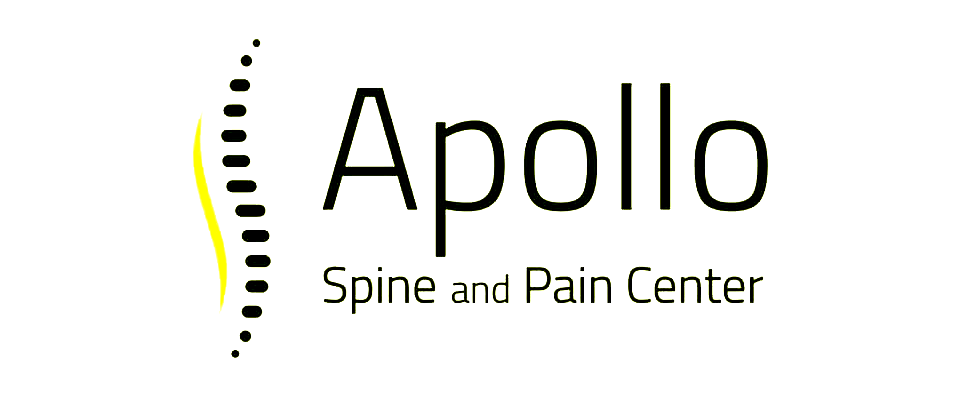Navigating Pain Management: A Glossary of Essential Terms
Navigating the complex world of pain management can be challenging, particularly when encountering medical jargon and unfamiliar terminology. Having a clear understanding of key pain management terms empowers you to make informed decisions about your treatment plan and discuss your options with confidence. In this glossary, we'll explain essential terms related to injections, epidurals, spinal cord stimulators, and other pain treatments available at Apollo Spine and Pain Center.
Equipping yourself with this knowledge will help you to understand the various modalities and techniques used in managing chronic pain and ultimately enable you to select the most appropriate options for your specific condition. Read on to shed light on the terminology used in the pain management field and become better equipped to advocate for your health.
Common Pain Management Techniques
- Epidural Injection: An epidural injection is a minimally invasive procedure where pain-relieving medication, such as corticosteroids or local anesthetics, is administered into the epidural space of the spine. This treatment aims to reduce inflammation and alleviate pain, especially in cases of sciatica, herniated discs, or spinal stenosis.
- Nerve Block: A nerve block involves injecting anesthetic medication near specific nerves to temporarily block pain signals from reaching the brain. This technique is commonly used for acute pain management, as well as for diagnostic and therapeutic purposes.
- Radiofrequency Ablation (RFA): RFA is a non-surgical pain management technique that uses electrical current generated by radio waves to heat up nerve tissue selectively. This process can reduce or eliminate pain signals generated by specific nerves. RFA is often used to treat chronic pain in the neck, lower back, or joints.
- Spinal Cord Stimulator (SCS): The SCS is an implantable medical device that delivers electrical stimulation to the spinal cord, interfering with pain signals and providing relief from chronic pain. This treatment is typically reserved for patients who have not found relief through more conservative approaches.
Pain Medications and Pharmacological Treatments
- Analgesics: Analgesics are a class of medications used to relieve pain. They include non-opioid drugs, such as acetaminophen and nonsteroidal anti-inflammatory drugs (NSAIDs), as well as opioid medications, such as morphine or oxycodone. Understanding the differences between types of analgesics and their appropriate use is crucial for safe and effective pain management.
- Antidepressants: Although primarily used to treat depression, certain antidepressants can also help manage neuropathic pain. Drugs like amitriptyline or duloxetine are often prescribed for pain relief in patients with fibromyalgia, diabetic neuropathy, or complex regional pain syndrome.
- Anticonvulsants: Anticonvulsant medications, originally developed to treat seizures, may also be effective in reducing neuropathic pain. Gabapentin and pregabalin are two commonly prescribed anticonvulsants for chronic pain management.
- Muscle Relaxants: These medications are prescribed to alleviate muscle pain, spasms, and stiffness, often resulting from various musculoskeletal conditions. Examples include cyclobenzaprine and tizanidine.
- Topical Analgesics: Topical analgesics are pain-relieving medications applied directly to the skin, available in creams, gels, or patches. These treatments may contain active ingredients like lidocaine, menthol, or capsaicin to provide localized pain relief for conditions such as arthritis or neuropathy.
Alternative and Complementary Pain Management Modalities
- Acupuncture: Acupuncture is an ancient practice involving the insertion of thin needles at specific points on the body to stimulate the release of natural pain-relieving chemicals. This alternative therapy can help manage chronic pain from various conditions, such as fibromyalgia, headaches, or lower back pain.
- Transcutaneous Electrical Nerve Stimulation (TENS): TENS units are portable devices that deliver electrical stimulation through adhesive electrode pads placed on the skin to relieve pain. The electrical impulses are believed to interfere with pain signals and promote the release of endorphins, the body's natural painkillers.
- Physical Therapy: Physical therapy involves strengthening exercises, stretching, and manual techniques performed by a licensed therapist to promote pain relief, restore function, and improve overall health. This modality is beneficial for a wide range of chronic pain conditions, such as musculoskeletal disorders, neurological conditions, or post-surgical rehabilitation.
- Biofeedback: Biofeedback is a mind-body technique that uses electrical sensors to measure physiological responses, such as heart rate, blood pressure, muscle tension, or skin temperature. Through this process, individuals learn to control these physiological responses to achieve relaxation and pain relief.
- Cognitive Behavioral Therapy (CBT): CBT is a psychological intervention that focuses on addressing maladaptive thoughts, emotions, or behaviors that may contribute to chronic pain and distress. This therapy helps patients develop new coping skills and strategies to better manage pain and improve their overall quality of life.
Important Pain Management Considerations
- Tolerance: Tolerance refers to the body's adaptation to a drug's effects, leading to the need for a higher dose to achieve the same level of pain relief initially. Tolerance is a common concern with long-term use of opioid analgesics.
- Physical Dependence: Physical dependence is a physiological adaptation to chronic drug administration, leading to withdrawal symptoms upon the sudden reduction or cessation of the drug. This phenomenon may occur with long-term use of opioids and certain other medications, including some antidepressants and anticonvulsants.
- Side Effects: Side effects are unwanted or potentially harmful reactions to medication or treatments. It is essential to understand the potential side effects of pain management therapies and discuss them with your healthcare provider to make informed decisions about your treatment plan.
- Contraindications: Contraindications are factors that may increase risks or make a specific treatment unsafe or potentially harmful to a patient. When discussing pain management options, it is crucial to inform your healthcare provider of any known contraindications or potential complications to ensure your safety and well-being.
By familiarizing yourself with these key terms and concepts in the pain management field, you are better prepared to understand your treatment options and discuss your care plan with confidence. This knowledge empowers you to make informed decisions and take an active role in managing your chronic pain effectively.
Taking Control of Your Pain Management Journey
Understanding the key pain management techniques and terminology can help you navigate your pain relief journey with confidence. At Apollo Spine and Pain Center, our team of experienced professionals is dedicated to tailoring personalized treatment plans for your specific needs. By addressing the root causes of your pain through a combination of innovative therapies and expert care, we strive to improve your overall quality of life.
Empower yourself with the knowledge of essential
pain management terms and take control of your pain relief journey by scheduling a consultation with one of our pain specialists. Together, we can explore your treatment options, answer all your questions, and begin your path to a more pain-free and fulfilling life. Contact Apollo Spine and Pain Center today to book an appointment!












